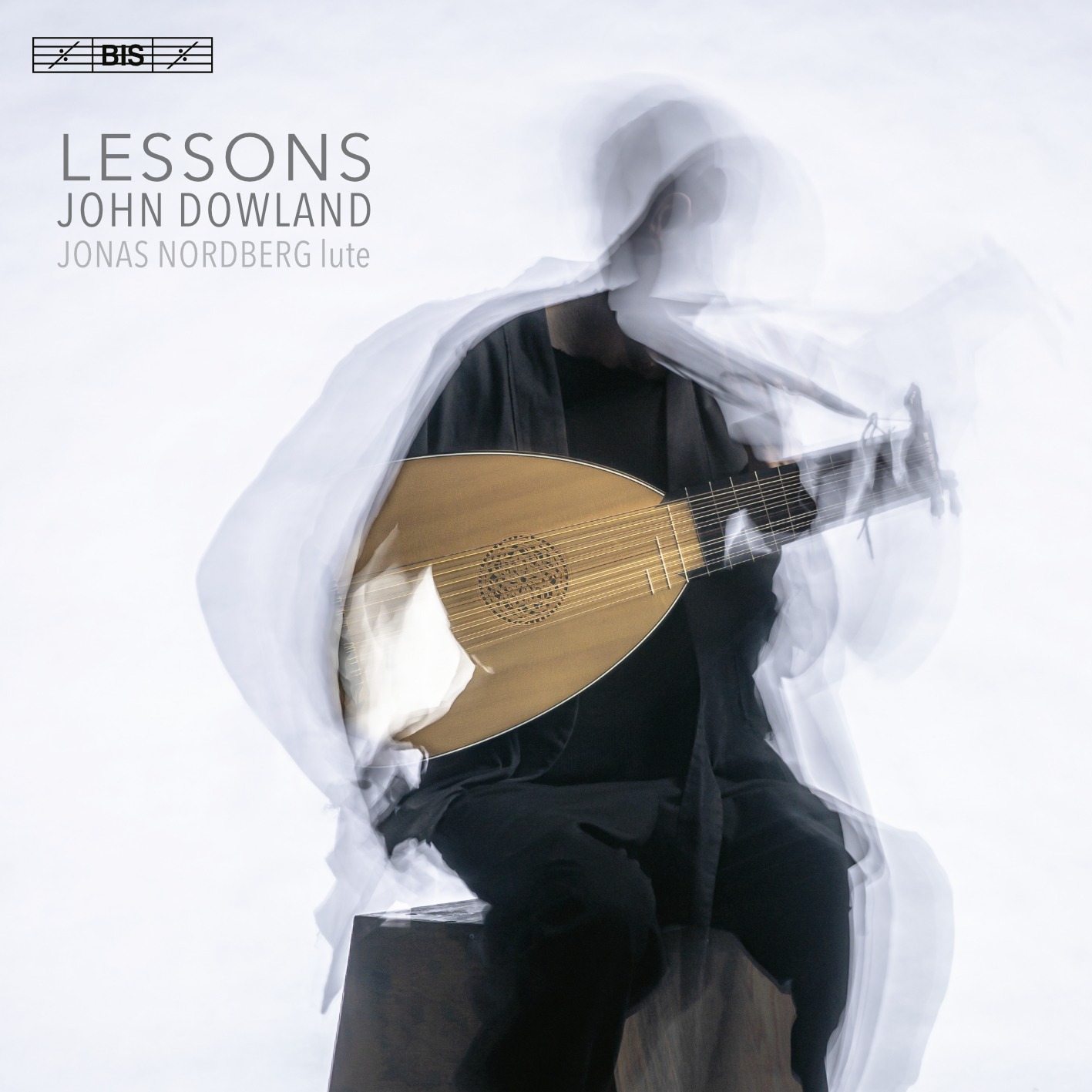 LESSONS
LESSONS
In English Renaissance collections of music, the term ‘lessons’ is often used to describe instrumental pieces, even though they aren’t pedagogical exercises as such. But as Jonas Nordberg writes in an introduction to his new disc ‘there remains much in them to be studied’. John Dowland is one of the composers whose music was a driving force of the Early Music revival already at the beginning of the 20th century. He has also played a central role in the rediscovery of the lute itself, an ongoing process which began more than a hundred years ago.
Like many other musicians, Jonas Nordberg is continuously exploring the intimate relationship between a score and the instrument it was written for: ‘The pieces by Dowland on this album contain an entire musical universe, in which I have spent many years, discovering new layers of meaning. In that way these lessons – in combination with the instrument on which I play them – have also been my teachers. So it is a great pleasure to invite you to share them with me, and to explore for yourselves the rich combination of melancholy, joy and beauty to be found in these works.’
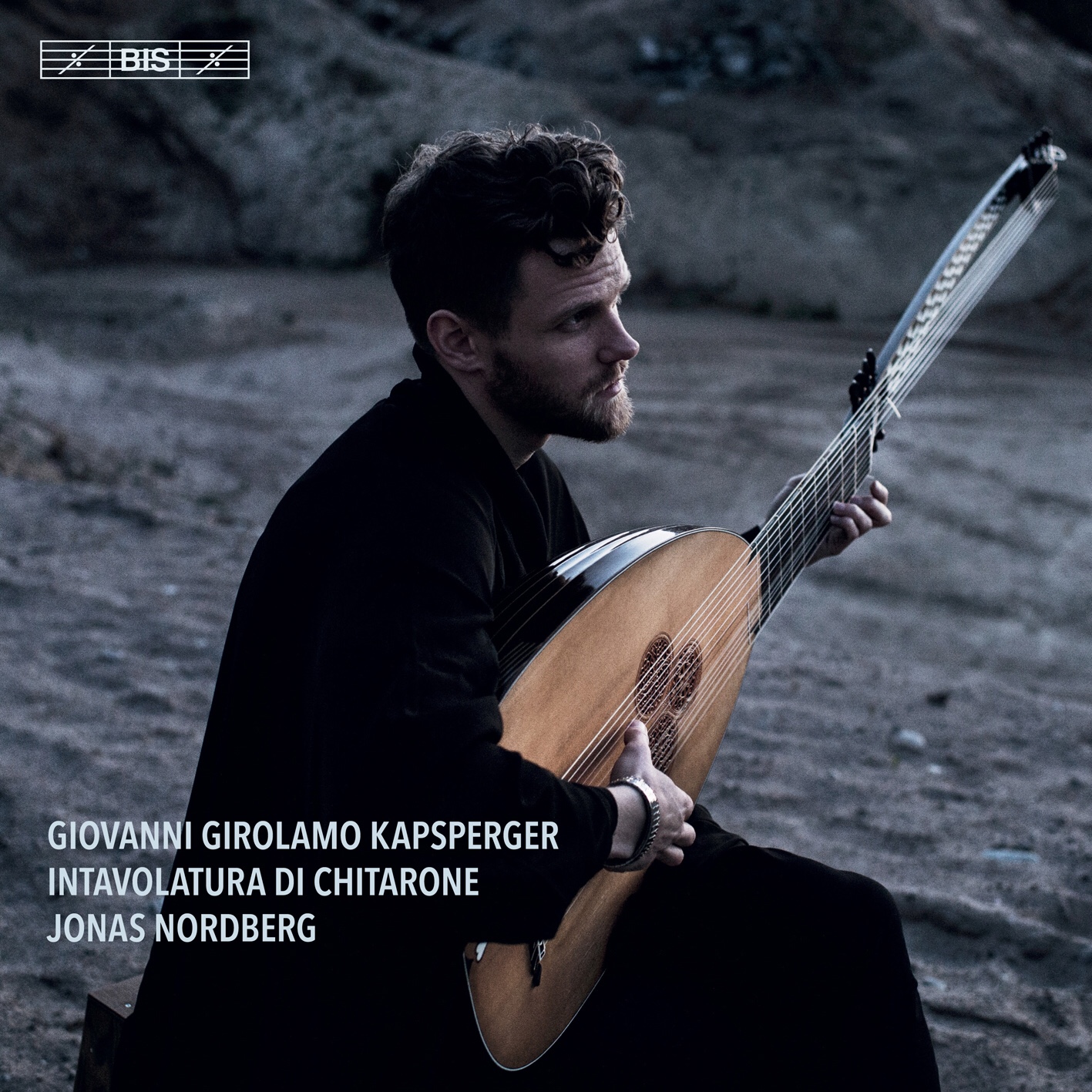 Intavolatura di chitarone
Intavolatura di chitarone
At the end of the 16th century, the pursuit of greater, more vivid expressivity dominated music-making all across Italy, taking madrigals and other vocal ensemble forms as its starting point but soon going on to explore the possibilities offered by solo singing. For some decades the theorbo (or chitarone, as it was also called) was regarded as the ideal instrument for accompanying singers, but as a leading exponent of the instrument Giovanni Girolamo Kapsperger soon also established it as a solo instrument in its own right. Of German descent, Kapsperger published his first book of solo pieces for the theorbo in 1604 and went on to enjoy a successful career in Rome, contributing to the monumental cultural programme of Pope Urban VIII. There he moved in intellectual circles, particularly that of the scientist Galileo Galilei.
During the 1630s things became quiet for Kapsperger, possibly a side effect of Galilei’s conviction for heresy in 1633. Not until 1640 did his last known volume of theorbo pieces appear, the number four in its title indicating that two books have been lost. A particularly attractive aspect of Kapsperger’s music for the theorbo is the marked contrasts between dramatic and impetuous toccatas, straightforward, ‘no-nonsense’ passacaglias and rhythmically refined but simply constructed dance movements such as galliards. These are here all made to sound under the fingers of Jonas Nordberg, sought-after as soloist as well as ensemble musician, performing on a wide range of plucked instruments including the lute, guitar and theorbo. On BIS he has previously appeared on the acclaimed album Heroines with soprano Ruby Hughes and in chamber works with recorder player Dan Laurin.
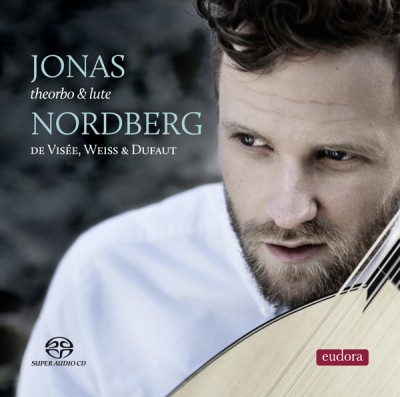 de Visée, Weiss & Dufaut
de Visée, Weiss & Dufaut
For his début solo recording, Swedish lutenist Jonas Nordberg presents a delightful selection of works for Baroque lute and theorbo; the grandeur and elevated spirit of the French Baroque music of Dufaut and de Visée alternate with the refinement and extraordinary originality of the works of Silvius Leopold Weiss, who was regarded as the finest lutenist of his time. Jonas Nordberg, who has recorded three albums for BIS with recorder virtuoso Dan Laurin, gives personal and intense performances of these pieces, recorded in the gorgeous acoustic of the 13th Century Spanish church of San Francisco, in Ávila.
![]()
![]()
![]()
![]()
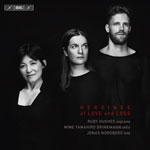 Heroines of love and loss
Heroines of love and loss
The women appearing before our ears throughout this programme range from the Virgin Mary and Dido, queen of Carthage, to Shakespeare’s Desdemona and the unfortunate Anne Boleyn, waiting for her execution in the Tower of London in 1536. But the disc also features four other heroines – the Italian composers Claudia Sessa, Francesca Caccini, Lucrezia Vizzana and Barbara Strozzi. All active between 1590 – 1675, they will have required great courage to rise above the social conventions of the time, but this surprisingly productive period for female composers also offered an opportunity that would disappear in later centuries: the all-female environment provided by the convent. More than half of the women who published music before 1700 were nuns, including Sessa and Vizzana, who are here represented by brief meditations on the suffering and death of Christ. Caccini and Strozzi, on the other hand, lived very much in the secular world – Caccini at the Florentine court and Strozzi as a free-lance musician and composer in Venice. Unhindered by the restrictions imposed by the church on sacred music they both adhered to the new stile moderno championed by Claudio Monteverdi. Celebrated for their singing, they composed vocal music which makes ‘the words the mistress of the harmony and not the servant’, to quote Monteverdi’s brother Giulio Cesare. The soprano Ruby Hughes has already made her name for herself in a wide-ranging repertoire, but has a special love for the constellation of lute, cello and voice. With Jonas Nordberg and Mime Yamahiro Brinkmann – who also contribute instrumental solos – she here revels in the dramatic and expressive potential offered by the combination, and by the music by these female composers and their English colleagues Henry Purcell and John Bennet.
![]()
![]()
![]()
![]()
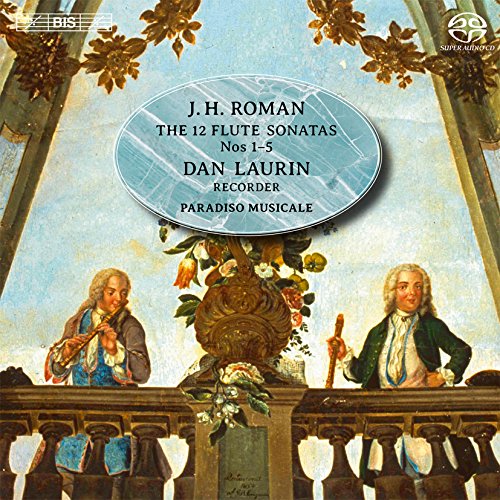 J. H. Roman – The 12 Flute Sonatas vol. 1 (sonatas I-V)
J. H. Roman – The 12 Flute Sonatas vol. 1 (sonatas I-V)
In Stockholm during Johan Helmich Roman’s lifetime, the recorder was the most common wind instrument, used throughout the social spectrum including the Royal music establishment for which the composer was responsible. The transverse flute, on the other hand, was generally the preserve of the upper classes the nobility and bourgeosie. Possibly this higher status contributed to Roman’s choice of instrument for the set of XII Sonate a flauto traverso, violone e cembalo that he presented to Queen Ulrika Eleonora the Younger on her birthday in 1727. But that hasn’t stopped the celebrated recorder player Dan Laurin to take up his countrymans sonatas on his own instrument. In a text included in the CD booklet, Laurin explains his fascination with Roman’s music: ‘complex emotional contexts are contrasted with folk music forms such as the villanella or piva the music is asymmetrical, irregular and full of unexpected twists, sudden pauses and cadences.’ In it, Laurin hears the influence of the Italian musicians that Roman met in London during his stay there 1715-1721. Especially striking he finds Roman’s affinity with the music of Naples a music that challenged the stylistic ideals of the baroque. With his fellow musicians in Paradiso Musicale, Laurin therefore opts for an Italianate slant different continuo settings, ranging from harpsichord alone to the full complement including baroque guitar, provide great variety in realizations characterized by bold and striking harmonizations.
 J.H Roman – The 12 Flute Sonatas vol. 2 (sonatas VI-XII)
J.H Roman – The 12 Flute Sonatas vol. 2 (sonatas VI-XII)
With its ample playing time, the present disc completes Laurin’s survey of the sonatas, begun on BIS-2105 with Sonatas 1-5, a disc which received a recommendation on the web site Klassik-Heute.de and acclaim in Gramophone: ‘Dan Laurin brings all his customary verve and eloquence in pieces whose emotional content is as unpredictable as the sequence of movements.’ Together with the companion discs of Roman’s 12 keyboard sonatas recorded by Anna Paradiso, the set highlights the inquisitive mind and wide-ranging sensibilities of a composer who, although active in the far north of Europe showed a keen interest in what was happening on the continent.
 Antonio Vivaldi – Recorder Concertos, Dan Laurin/1B1
Antonio Vivaldi – Recorder Concertos, Dan Laurin/1B1
The Swedish recorder virtuoso Dan Laurin has demonstrated his remarkable versatility on some thirty recordings on BIS, ranging from a nine-disc set with 17th-century composer Jacob van Eyck’s complete Der Fluyten Lust-hof to the recent Rock that Flute, with music for recorder and strings written in 2013 by the Dutch composer Chiel Meijering. During a recording career that stretches over almost 30 years, Laurin keeps returning to one particular set of works, however: the concertos by Antonio Vivaldi. Three of the works (the Concertos RV 441, 443 and 444) included on his latest release he has recorded more than once before, with ensembles such as the Drottningholm Baroque Ensemble, Bach Collegium Japan and Arte dei Suonatori. For his latest ‘take’ on these favourites Laurin has joined forces with the young and vibrant Norwegian string ensemble 1B1 (shorthand for Ensemble Bjergsted 1). As he explains in his own liner notes for the present disc, he was inspired by his work on transcribing and performing Vivaldi’s Four Seasons: ‘A close reading of RV441 and RV443–445 reveals great similarities between these works and The Four Seasons: sudden changes of moods, turbulent emotions, burlesque whims mixed with sublime beauty and elegance… My aim here is to explore the recorder concertos with the same freedom and spontaneity that characterize the modern-day approach to the Seasons.’ Laurin’s recording of the Seasons has been called ‘undoubtedly the best transcription to date’ (Diapason) and ‘never hackneyed, but instead invigoratingly fresh and vibrant’ (Clarino), verdicts which can only fuel the expectations concerning this his latest version of the recorder concertos.
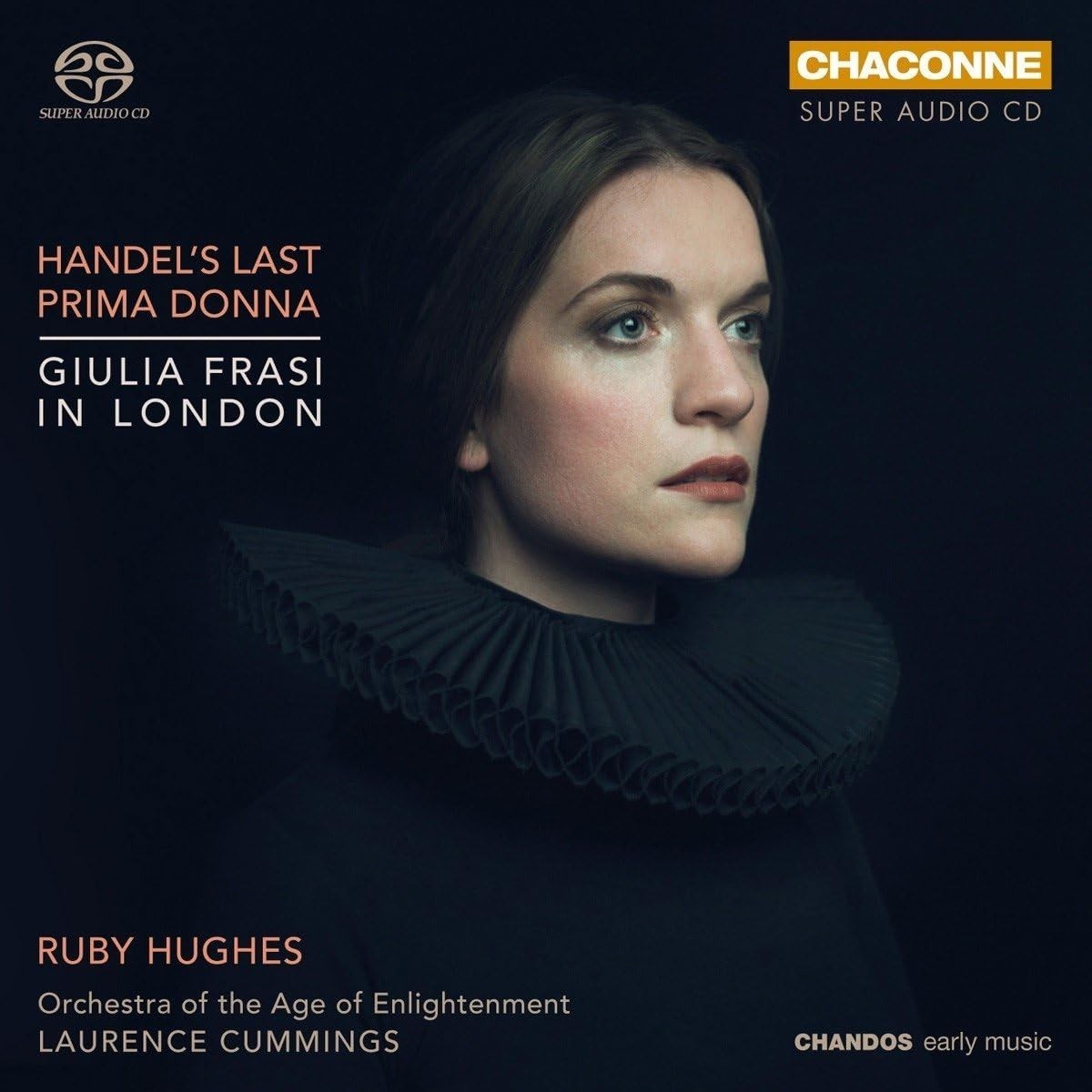 Handel’s Last Prima Donna – Giulia Frasi in London
Handel’s Last Prima Donna – Giulia Frasi in London
Excelling in Renaissance and baroque repertoire, the young British soprano Ruby Hughes pays tribute to Handel’s last prima donna, the Italian soprano Giulia Frasi. For her debut recording on Chandos she has chosen a selection of celebrated arias composed for Frasi by Handel, in his late oratorios Susanna, Solomon, Theodora, and Jephtha, and other composers of the era, whose works are now much less familiar, offering several modern premieres. Performed on period instruments by the Orchestra of the Age of Enlightenment, conducted by Laurence Cummings, and recorded in surround-sound, this programme is unique of its kind.
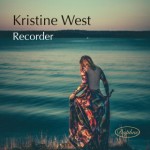 Kristine West – Recorder
Kristine West – Recorder
A thrilling debut album with a unique blend of baroque music, minimalism and folk music, with a wide spectrum of musical colourfulness. With her roots in the Swedish folk music, Kristine West takes on baroque music as well as contemporary music in a free and open minded way. Her playing is characterised by latitude and easiness, with the aim to create an experience of presence – with a conviction that what occurs in the musical moment is the only thing that exists. The interpretation can constantly change and be reconsidered – depending on fellow musicians, the acoustics and the audience. In this way the music is constantly alive, built on impulse, interplay and sense, free to reflect the mutual experience of the moment.
Jonas performs three Scottish pieces by Barsanti as well as a recorder concerto by Vivaldi on the critically acclaimed debut album by Swedish recorder virtuoso Kristine West